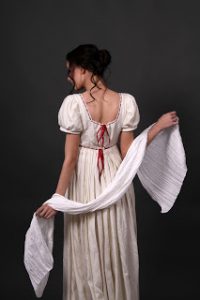Like many readers, I have multiple reasons why I might choose to buy a book: I love the author’s other work and/or someone I trust has given it a smashing review, and the price is right. But just as important is the way it looks: a stunning cover makes a big difference. I rarely bother with covers that are just “meh” or worse, even if the book is cheap or free! I already have over 100 books in my “unread” file on my Kindle and as many in mind to buy when those are read. No need to muddy that up with iffy ones.
It’s not easy for authors to decide on a cover, but most authors give at least a little thought to it. Let me make a suggestion: give it more than a little thought. The cover has strong potential as a make-it-or-break-it selling point for any book. It should be a teaser for what’s inside, a hint of the drama on offer, and a taste of the reading pleasure that’s possible with the purchase of this new book. It should be unique enough that readers don’t confuse it with another book, comment on Amazon that you took another author’s idea, or get a laugh at your expense.
I love this portrait of Léon Riesener painted by Eugène Delacroix in 1835. I think he’s the perfect Mr. Darcy at the point when he realizes Elizabeth Bennet isn’t going to accept his marriage proposal at Hunsford, and I would dearly love to use him in that capacity on a book cover. There are two problems: I don’t have a book that suits him as cover art, and he’s been “taken” in the world of Jane Austen Fan Fiction (JAFF) covers, which is my sub-genre of Regency romance. Dear Léon was made into a phenomenal back cover Colonel Fitzwilliam by cover artist Janet Taylor for author Nicole Clarkston’s latest novel, These Dreams. By the way, I’ve bought several of Janet Taylor cover designed books for the covers alone. I’m lucky Nicole is also such a good author!

Letter from Ramsgate by Suzan Lauder, award-winning cover design by Zorylee Diaz-Lupitou. Click on the thumbnail to enlarge the image.
Meryton Press cover artist and administrator Zorylee Diaz-Lupitou has created quite a number of stunning covers for Jane Austen Fan Fiction novels, and she has a unique way of understanding how readers react to book covers: she and her husband go into book stores and look for covers that catch their eye. They make a bit of a game of it: point the book out to each other, then justify their choice. They then work together to critique it in comparison with other similar covers and figure out why it caught their eye. That way, details are analysed so Zorylee comes back with an arsenal of concepts to use in searching for the right images and fonts for each novel.
Author L.L. Diamond has a degree in studio art, which means she’s a trained graphic artist as well as a gifted watercolour painter. Her art history expertise means she can find cover art that’s not exactly from the era she writes in, but leans so much towards it that the reader is none the wiser. They also evoke the story within very well, and draw the reader towards purchase just for the pretty cover. This is an example where an author-designed cover is a good thing—when the author is well-qualified.
These are merely three examples of good cover artists, and there are many more out there. Yet too many authors use cover artists that re-use materials from other authors’ covers, making the author lose the “unique” they thought they were paying for! The girl on the left is on no fewer than 23 covers, disguised a bit on some, but easy to pick out. However, if someone uses the same cover art as you did, the best you can do is say to yourself, “imitation is the best form of flattery.” Acknowledge it if mentioned, but take the high road.
Some cover artists have no background historical costuming or scenes. It’s too bad that they take money for their weak efforts. Giving short shrift to historical accuracy on a cover grates on the reader just like anachronistic scenes or non-period language inside can: how many times has it bugged you to see that same old spray-tanned, blow-dried 1990’s hair, modern tuxedo-wearing gentleman on multiple authors’ Regency romance covers? (There’s a dark haired and a blond version!) It drives me up the wall, and is a strong deterrent to purchase, even if I really like the author. How about Victorian-ish gowns or a man with long, flowing hair on a Regency romance? Blech. Yet some top authors use them all the time. I suppose they’ve justified themselves that their books still sell well. But how much better would they sell with a historically accurate cover?
Even worse, in my opinion, than the ill-qualified cover artist is the author who does it on their own using a photo that simply says nothing about the book—it could be on any novel, it’s so generic. Authors pay attention to adverbs and character studies, dropped caps and epilogues, yet those aspects don’t get new readers in a buying mood. Authors, you can only go so far in counting on people wanting to read the first book based on price and forgiving you enough to buy the next one if your cover is a dead bore. A matching dead bore is no compensation.
And layout is hard, even for a seasoned cover artist. Where should the title and author name go, how large for each image and font, which fonts to use, how to enhance them, etc., etc., are all difficult questions the cover artist must deal with. If that is the author who is an amateur, you can get by with rules of thumb only so far, then little layout glitches come out to bite you.
I even get sad when I see the covers where the scale doesn’t work on Amazon—clearly, the amateur cover designer had no clue. This even more important for fonts, though it’s common with tiny images, too. You have to be able to see and read the cover when it’s at a small scale.
Care must be taken using images. Make certain you know the source and pay for the rights when necessary with photos and even antique portraiture. Personally, I frown on a heavy reliance on computer graphic images in most genres unless well rendered and realistic in appearance. The cover shouldn’t imply that the story is a video game—unless it is. If you’re creating your own cover, you’d better be pretty good at Photoshop. Too often, it looks like there’s a cut-out doll pasted with mucilage onto the background scene, or the scene is out-of-scale or out-of-context. And don’t get me going on pasted-on fake hair!
Try to be well aware of most of the covers in the book’s sub-genre so you don’t make the mistake of copying them, however inadvertently. For example, too many Jane Austen Fan Fiction covers look like the original cover of Austenland when it should have been the only one, and we already discussed that girl on 20 covers. It may be a nice image, but if it’s someone else’s, move on.
There is such a thing as too much, and covers with a dozen images from various parts of the book run the risk of being disjointed and busy. Keep it to a few key messages for each of the front and back cover and then make them look the most unique as the author can afford.
What about the back cover? That’s a personal decision. Some are simple, just a text panel showcasing the blurb and some complementary graphics. Others are just as well-designed and detailed as the front cover. If the author will be doing signings, the back cover will help sell as well, so take care there.
A good cover artist will read your book first. If that’s not possible, the author should give them a detailed synopsis to work from. Authors can help their cover artist out by sending ideas in the form of descriptions, clip art, or a Pinterest page for their novel. Don’t expect the good cover artist to use exactly what you sent. Do give the cover artist detailed feedback and stand up for any changes you think need to be made, but expect that there are limitations to what the cover artist can do given certain media. For example, it’s hard to modify original art. Even with graphic design, there’s only so much that can be done. Work with the cover artist to get the best out of what limitations exist.
The lesson goes back to the original post in this series: authors should do their best to give the reader an experience with the greatest level of satisfaction within the author’s control. Covers add to that reading experience, so pay attention to cover design! Here are some ways to achieve your goals:
- Look at other authors’ covers in your sub-genre to see which are the most striking.
- Read reviews and blogs in your sub-genre to know which covers get the most positive comments.
- Learn what it means to be historically accurate for your book.
- Think about the content of your novel: does your cover tell enough of the story to intrigue a potential reader?
- Ask friends who read in the genre to point out their favourite covers and analyze why they work.
- Make sure your graphics and fonts are polished looking and visible at small scale.
- Work with your cover artist asking questions and making suggestions for improvement until you’re satisfied it’s the best you can get for what you’re paying.
Don’t allow the cover to take a back seat to the quality of the novel. All that hard work deserves to be displayed in the best way on the Amazon seller’s page. Make your book memorable both inside and out, and it should pay off.
Disclaimer: I’m not a writing expert. I’m just a writer who learned some stuff other writers might like to know instead of learning the hard way. My approach is pragmatic, and my posts are not professionally edited!
Second Disclaimer: If I’ve missed a few contractions, it’s not because I’m overly formal, it’s because I’ve been writing Regency romance lately and that sub-genre uses no contractions!
Save


